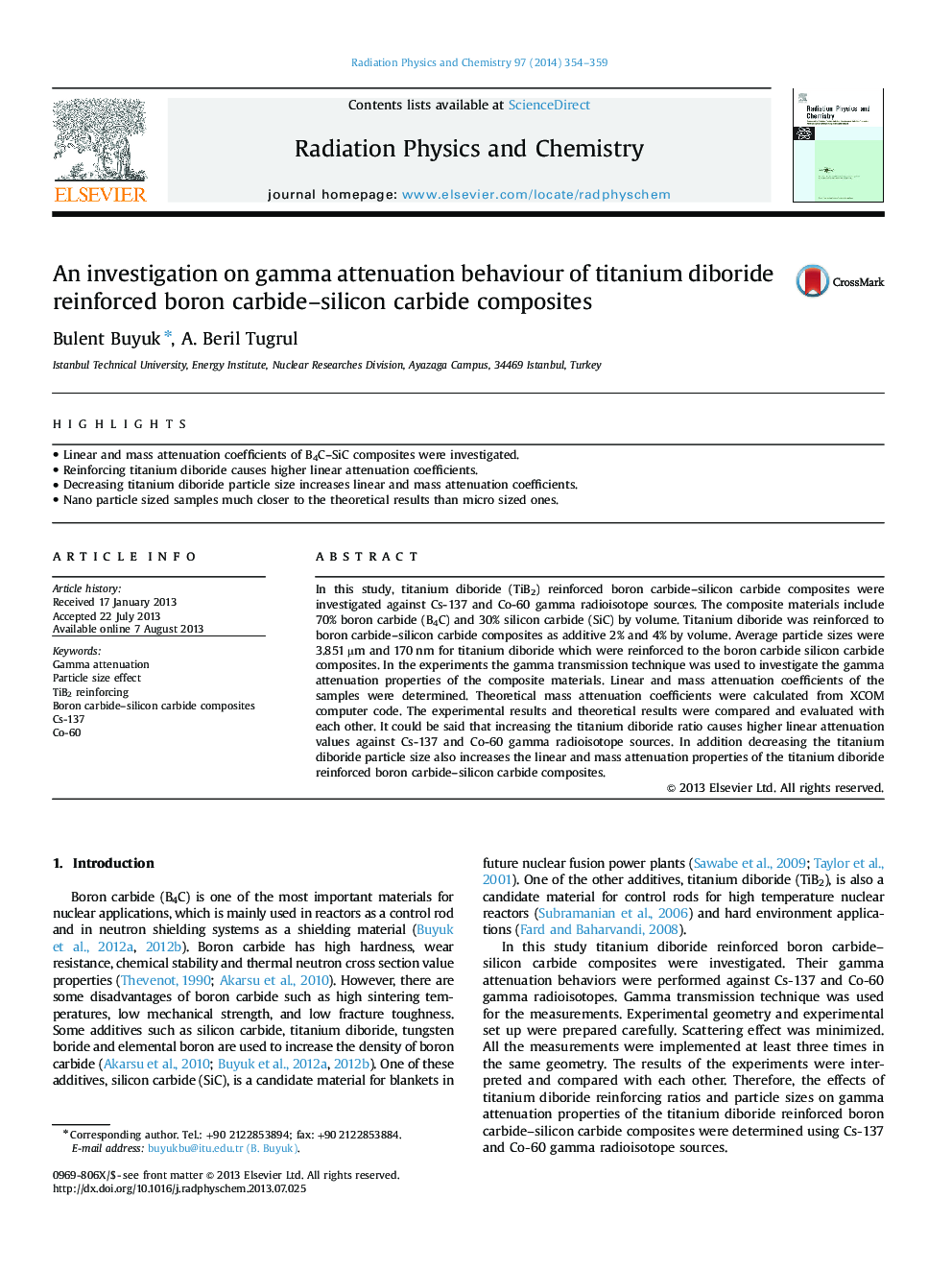| کد مقاله | کد نشریه | سال انتشار | مقاله انگلیسی | نسخه تمام متن |
|---|---|---|---|---|
| 1886152 | 1533527 | 2014 | 6 صفحه PDF | دانلود رایگان |
• Linear and mass attenuation coefficients of B4C–SiC composites were investigated.
• Reinforcing titanium diboride causes higher linear attenuation coefficients.
• Decreasing titanium diboride particle size increases linear and mass attenuation coefficients.
• Nano particle sized samples much closer to the theoretical results than micro sized ones.
In this study, titanium diboride (TiB2) reinforced boron carbide–silicon carbide composites were investigated against Cs-137 and Co-60 gamma radioisotope sources. The composite materials include 70% boron carbide (B4C) and 30% silicon carbide (SiC) by volume. Titanium diboride was reinforced to boron carbide–silicon carbide composites as additive 2% and 4% by volume. Average particle sizes were 3.851 µm and 170 nm for titanium diboride which were reinforced to the boron carbide silicon carbide composites. In the experiments the gamma transmission technique was used to investigate the gamma attenuation properties of the composite materials. Linear and mass attenuation coefficients of the samples were determined. Theoretical mass attenuation coefficients were calculated from XCOM computer code. The experimental results and theoretical results were compared and evaluated with each other. It could be said that increasing the titanium diboride ratio causes higher linear attenuation values against Cs-137 and Co-60 gamma radioisotope sources. In addition decreasing the titanium diboride particle size also increases the linear and mass attenuation properties of the titanium diboride reinforced boron carbide–silicon carbide composites.
Journal: Radiation Physics and Chemistry - Volume 97, April 2014, Pages 354–359
